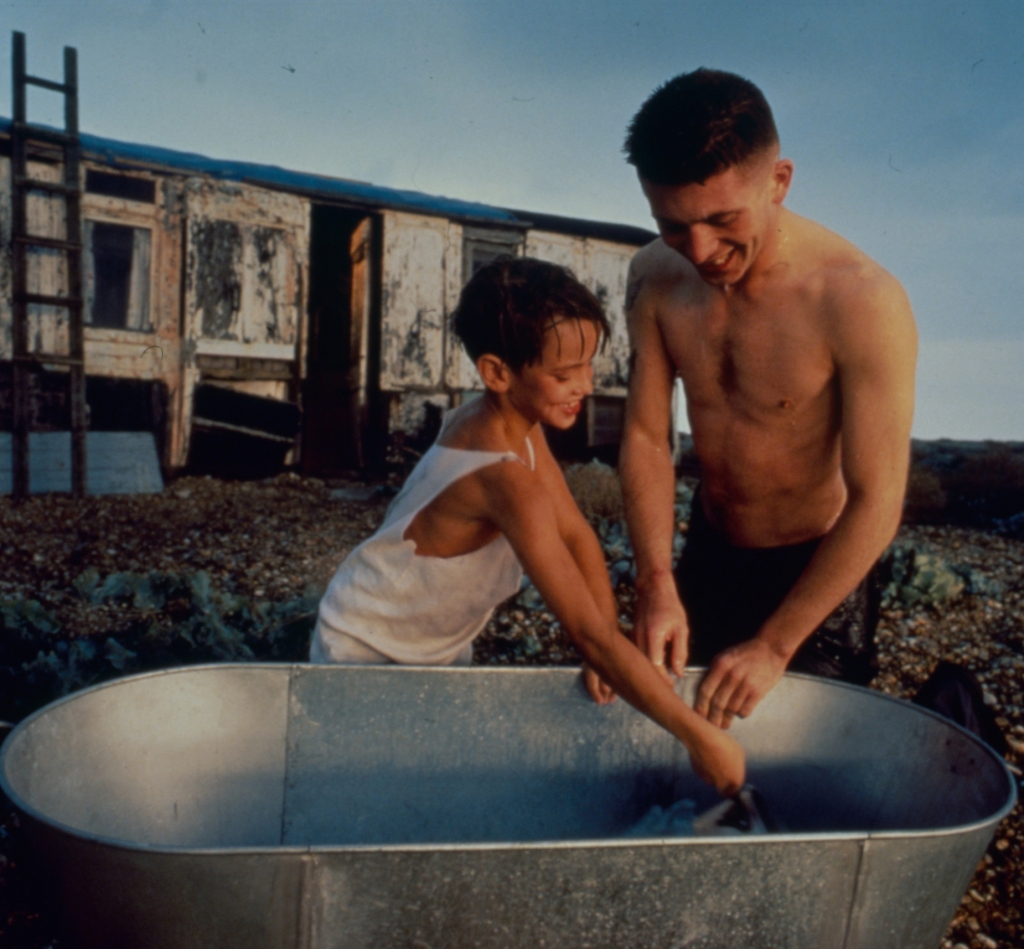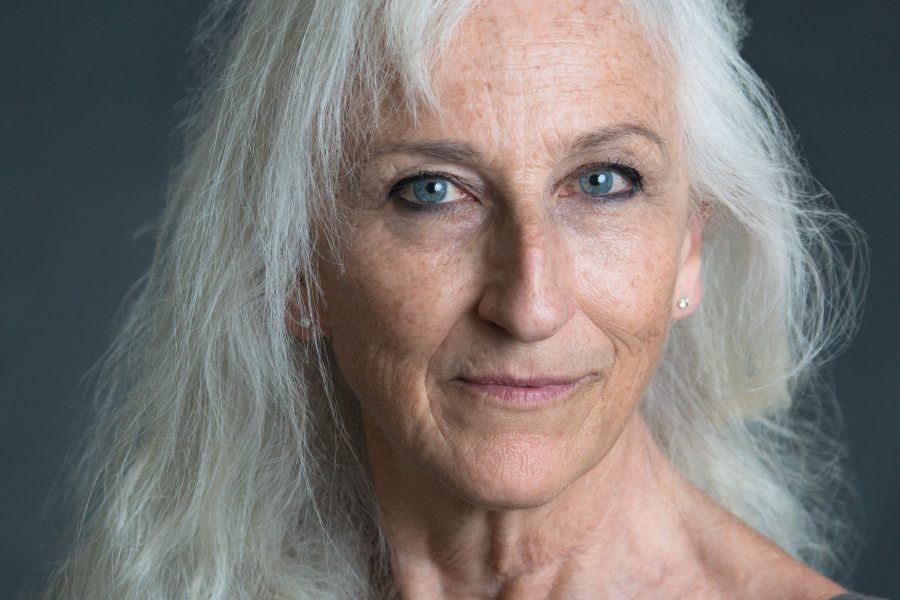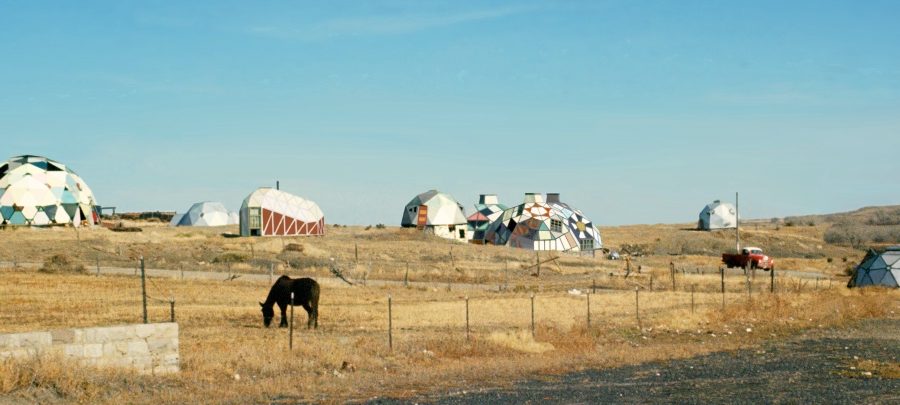The Garden offers an intimate insight into the inner world of the iconic filmmaker, author, poet, and artist Derek Jarman. The backdrop for the film is the garden Jarman created on the windswept Kent coast in the shadow of the Dungeness power station.
Interweaving narratives play out, almost wordlessly, to create what Jarman described as a dream allegory. The story of two lovers and the homophobic violence they encounter sits alongside episodes loosely derived from the Passion of Christ, set in a contemporary world of paparazzi, celebrity culture, and intolerance.
This film was selected by Simon Bayliss. Simon is an artist and music producer based in St Ives. He works in slipware ceramics, video, poetry, watercolour painting, and performance.
SIMON BAYLISS: INTRODUCTION
When I was thirteen I painted my bedroom purple and pink. Or at least it was a dark purple and bright magenta. I got the idea from the TV programme Changing Rooms, with Laurence Llewelyn-Bowen, and didn’t give any thought to the colour connotations. My parents didn’t say anything either. That’s the problem with having liberal parents – you grow up as an idealist and innocently pursue careers like artist.
One day I invited one of my skateboarder friends to see my room. He couldn’t believe I’d chosen to paint it pink. I never saw him again and I repainted the walls. In my circle of friends anything uncool was soooo gay. Eventually I learned, the hard way, that it’s possible to be homophobic and gay and at the same time. And that it takes a lot of work to accept, and eventually appreciate, the part of yourself that you were phobic of.
I haven’t had to face the same struggles that Derek Jarman and his generation suffered. I feel lucky to be part of a more open and medically advanced society. With identity politics often at the centre of contemporary culture, I sometimes feel I’ve been given an easy ticket as an artist. But not one that I use lightly. And, with the increasing erosion of liberal values within populist politics and culture, I certainly don’t feel I can be complacent.
A friend recently sent me a link to the Christmas advert for the hardware store Robert Dyas, which features staff members and customers introducing themselves as gay, straight or bi. At one point a man called Mark gestures towards a Christmas tree and says Look at this Christmas tree. It’s perfect for a gay person. Or a straight person. Another staff member holds a drill and says This drill would work a treat in a straight person’s home. Or a gay person’s.
The delivery is completely deadpan, making it very difficult to know whether to take it seriously. Are they making a point of sharing their sexual orientation in an attempt to appear inclusive (which is surely sycophantic and patronising)? Are they proposing that sexuality might determine where you buy home appliances? Or are they cleverly making the point that over-simplified identity politics has reached a level of absurdity and that we need to shift towards much more nuanced ways of looking at ourselves, and each other?
Over the years I continue to learn how my own sexual orientation runs throughout my psyche and affects many aspects of my life. For example, over the past year or so, I’ve been having recurring dreams about looking after babies. I’ve reached a point in my life in which almost all of my friends are in couples and have had or are about to have children. I’m now having to work through my own ambivalent feelings about the likelihood of not having kids, and have experienced a kind of shift in my social identity, which I hadn’t anticipated – childless man.
In one of my baby dreams I was responsible for a very tiny and energetic baby called Marcus, who crawled extremely fast. He kept scurrying under furniture and I couldn’t keep up with him. On waking, I wondered about the significance of the name and learned that Marcus is Roman, derived from Mars, the god of war. Similarly, in astrology Mars is the planet of energy, action, and desire, ruling our animal instincts. In contrast to this, I also worked out that Marcus is an anagram of sacrum. The sacral region is at the base of the spine and the sacral chakra is the centre of emotion, sensuality and intimacy. Holy and sacred. For me this dream seems to point to an awakening – of a spirit in which warlike energy and sensitivity converge. Perhaps it’s the spirit of activism.
I think Derek Jarman’s films and art capture the kind of spirit of activism that I’m waking up to. They’re filled with both rage and compassion. It’s obvious we’re living through extremely challenging times and for me it’s crucial to have an active role in steering change, however small. Over the past six months I’ve become involved in Extinction Rebellion and most recently helped to coordinate a protest event on New Year’s day in St Ives town centre, which involved mass disco-dancing to Staying Alive by The Beegees. Extinction Rebellion’s mantra is to act now, in response to the climate and ecological emergency, and this concerns everyone at every level of society.
If there is a way for me to link these thoughts to the film we’re about to watch, it is that Jarman had an acute understanding of temporality and the fragility of life. The setting of the film is his own garden on the shingle shore near Dungeness nuclear power station, where westerly swells shape the ever-shifting landscape. It is a setting with no boundaries, no fences, spiked with native and naturalised plants such as sea kale, purple iris and pink valerian. One of my all-time favourite quotes is from Derek Jarman. He said paradise haunts gardens and it haunts mine. I’d shorten it to paradise haunts because I think paradise is the ghost that will haunt our lives over the next decade.
Delivered on Thursday 9 January, 2020.


